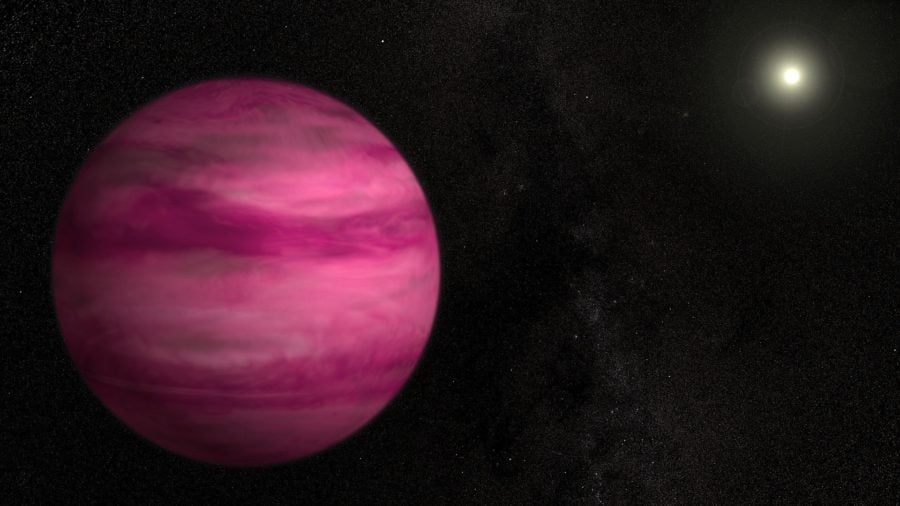
In the continuing search for dark matter in our universe, scientists believe they have found a unique and powerful detector: exoplanets.
In a new paper, two astrophysicists suggest dark matter could be detected by measuring the effect it has on the temperature of exoplanets, which are planets outside our solar system.
This could provide new insights into dark matter, the mysterious substance that can’t be directly observed, but which makes up roughly 80% of the mass of the universe.
“We believe there should be about 300 billion exoplanets that are waiting to be discovered,” said Juri Smirnov, a fellow at The Ohio State University’s Center for Cosmology and Astroparticle Physics.
“Even finding and studying a small number of them could give us a great deal of information about dark matter that we don’t know now.”
Smirnov co-authored the paper with Rebecca Leane, a postdoctoral researcher at the SLAC National Accelerator Laboratory at Stanford University. It was published today (April 22, 2021) in the journal Physical Review Letters.
Smirnov said that when the gravity of exoplanets captures dark matter, the dark matter travels to the planetary core where it “annihilates” and releases its energy as heat. The more dark matter that is captured, the more it should heat up the exoplanet.
This heating could be measured by NASA’s James Webb Space Telescope, an infrared telescope scheduled to launch in October that will be able to measure the temperature of distant exoplanets.
“If exoplanets have this anomalous heating associated with dark matter, we should be able to pick it up,” Smirnov said.
Exoplanets may be particularly useful in detecting light dark matter, Smirnov said, which is dark matter with a lower mass. Researchers have not yet probed light dark matter by direct detection or other experiments.
Scientists believe that dark matter density increases toward the center of our Milky Way galaxy. If that is true, researchers should find that the closer planets are to the galactic center, the more their temperatures should rise.
“If we would find something like that, it would be amazing. Clearly, we would have found dark matter,” Smirnov said.
Smirnov and Leane propose one type of search that would involve looking close to Earth at gas giants – so called “Super Jupiters” – and brown dwarfs for evidence of heating caused by dark matter. One advantage of using planets like this as dark matter detectors is that they don’t have nuclear fusion, like stars do, so there is less “background heat” that would make it hard to find a dark matter signal.
In addition to this local search, the researchers suggest a search for distant rogue exoplanets that are no longer orbiting a star. The lack of radiation from a star would again cut down on interference that could obscure a signal from dark matter.
One of the best parts of using exoplanets as dark matter detectors is that it doesn’t require any new types of instrumentation such as telescopes, or searches that aren’t already being done, Smirnov said.
As of now, researchers have identified more than 4,300 confirmed exoplanets and an additional 5,695 candidates are currently under investigation. Gaia, a space observatory of the European Space Agency, is expected to identify tens of thousands more potential candidates in the next few years.
“With so many exoplanets being studied, we will have a tremendous opportunity to learn more than ever before about dark matter,” Smirnov said.
from ScienceBlog.com https://ift.tt/3eAd4IU
No comments:
Post a Comment